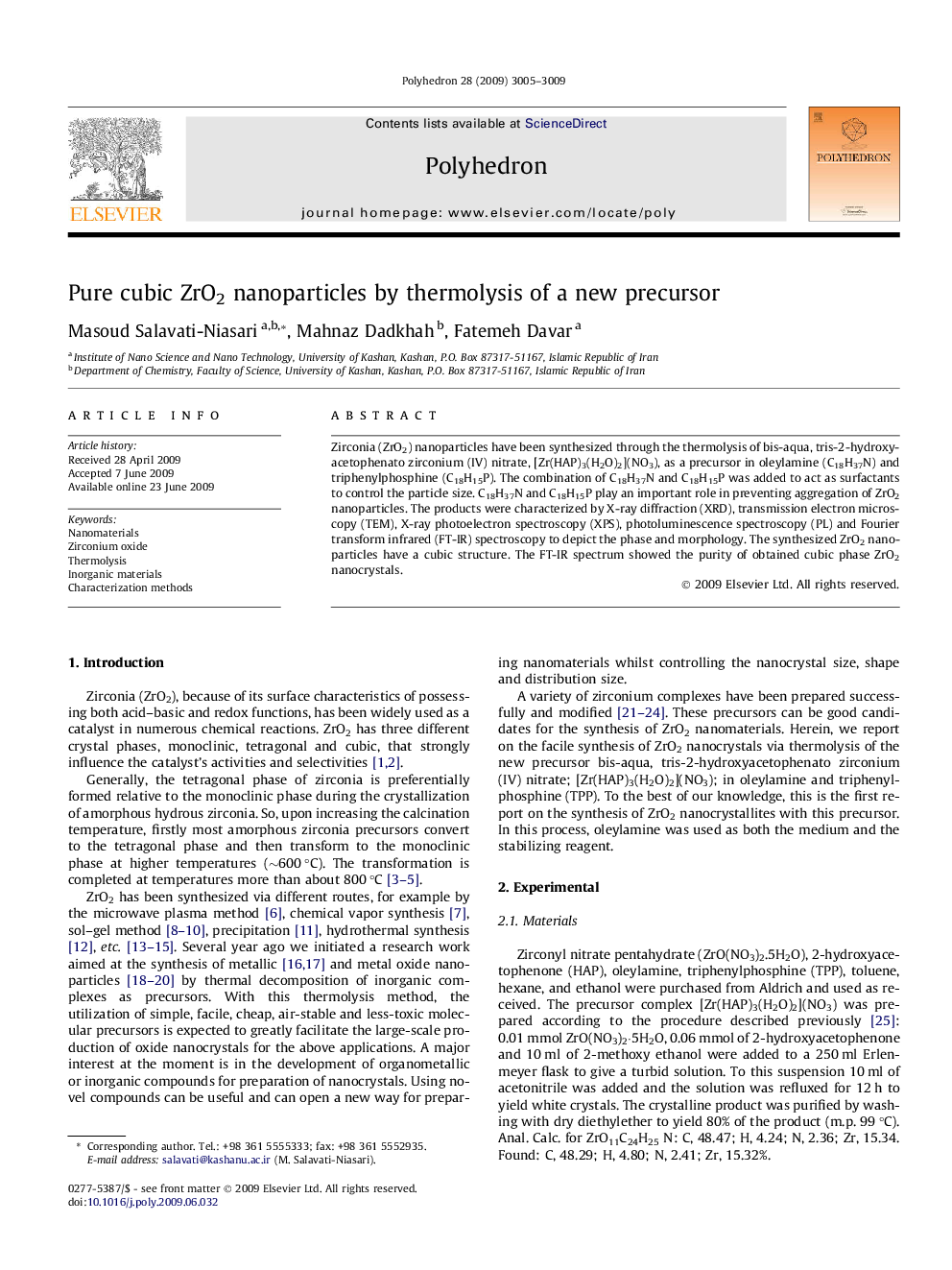| Article ID | Journal | Published Year | Pages | File Type |
|---|---|---|---|---|
| 1337545 | Polyhedron | 2009 | 5 Pages |
Zirconia (ZrO2) nanoparticles have been synthesized through the thermolysis of bis-aqua, tris-2-hydroxyacetophenato zirconium (IV) nitrate, [Zr(HAP)3(H2O)2](NO3), as a precursor in oleylamine (C18H37N) and triphenylphosphine (C18H15P). The combination of C18H37N and C18H15P was added to act as surfactants to control the particle size. C18H37N and C18H15P play an important role in preventing aggregation of ZrO2 nanoparticles. The products were characterized by X-ray diffraction (XRD), transmission electron microscopy (TEM), X-ray photoelectron spectroscopy (XPS), photoluminescence spectroscopy (PL) and Fourier transform infrared (FT-IR) spectroscopy to depict the phase and morphology. The synthesized ZrO2 nanoparticles have a cubic structure. The FT-IR spectrum showed the purity of obtained cubic phase ZrO2 nanocrystals.
Graphical abstractThe present investigation reports on the synthesis and characterization of zirconium oxide (ZrO2) nanoparticles using thermolysis. Pure zirconium oxide (ZrO2) nanoparticles with diameters of 30–40 nm are fabricated from [bis(2-hydroxyacetophenato)oxozirconium(IV)], [Zr(HAP)3(H2O)2](NO3), as a precursor in the presence of oleylamine and triphenylphosphine as the solvent and capping agent.Figure optionsDownload full-size imageDownload as PowerPoint slide
